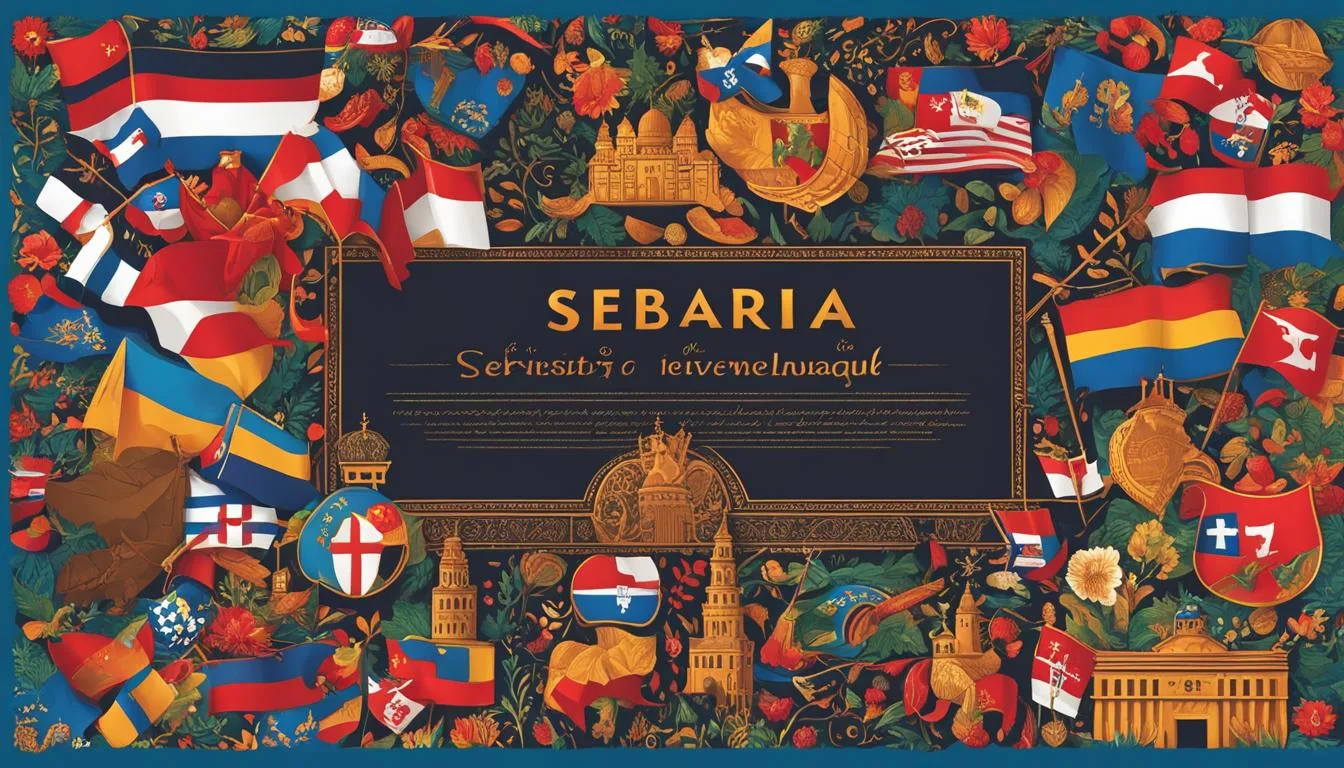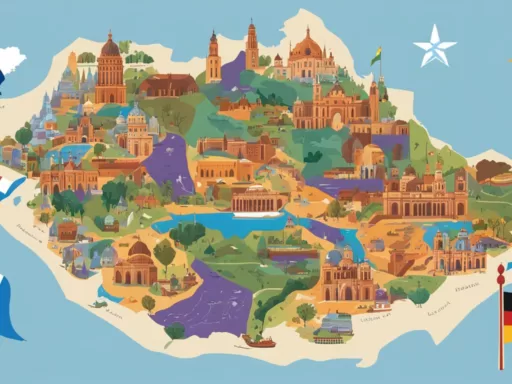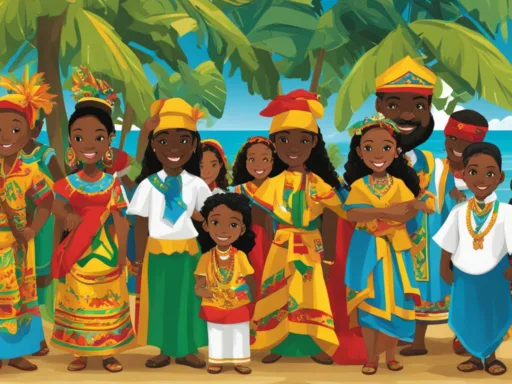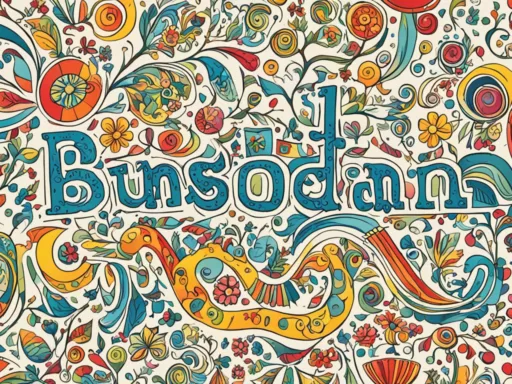Did you know that Serbia’s linguistic landscape is one of the most colorful in Europe, with over 15 minority languages officially recognized within its borders? Beyond the commonly spoken Serbian, the streets of Serbia echo with the cadence of Hungarian, Bosnian, Croatian, and many others, painting a vivid picture of language diversity in Serbia. This rich tapestry of tongues not only mirrors the nation’s complex history but also its commitment to cultural plurality and linguistic rights.
While Serbian holds the status of the official language and enjoys a nationwide recognition, the country’s linguistic map doesn’t stop there. In the autonomous provinces of Vojvodina and Kosovo & Metohija, a variety of languages are given official status, reflecting the unique demographic makeup of these regions. This mosaic of languages spoken in Serbia shapes every aspect of life, from public signage to media representation, and from educational curriculums to the corridors of governance. Understanding the linguistic landscape of Serbia is key to appreciating the nation’s cultural fabric and its people’s identity.
Key Takeaways
- Discover the diversity embedded within the linguistic landscape of Serbia, beyond the official Serbian language.
- Learn about how regions like Vojvodina and Kosovo & Metohija contribute to the language diversity in Serbia with their multilingual policies.
- Gain insights into how Serbia’s language diversity is represented in its public documents, education system, and media.
- Understand the significance of the various languages spoken in Serbia and their cultural and historical importance.
- Find out how Serbia’s commitment to language rights reflects in its legislation and daily life.
Unveiling Serbia’s Linguistic Landscape
At the heart of Southeast Europe, Serbia’s linguistic environment is as vibrant as its cultural heritage. With the Serbian language playing a cardinal role as the official medium of communication, it interweaves through the daily lives of the population, reminiscent of the country’s rich historical tapestry. Beyond the ubiquity of Serbian, the nation is illustrious for its linguistic inclusiveness, hosting various official languages in Serbia within its regions, and nurturing a fascinating array of Serbian dialects.
The Official and Predominant Language: Serbian
As the cornerstone of the country’s official communication, the Serbian language not only serves government and legal purposes but also unites the diverse populace under a shared linguistic identity. Its omnipresence is evident from education to media, and it pays homage to the nation’s identity in each modulated syllable.
Recognized Regional Languages: Diverse Voices in Vojvodina and Kosovo
Embracing diversity, the Autonomous Province of Vojvodina is a melting pot of languages. It’s a place where the air carries a symphony of dialogues in Hungarian, Slovak, Romanian, Croatian, Rusyn, and Serbian – each with an official status. Kosovo & Metohija’s language policy plays a harmonious duet with both Albanian and Serbian resonating within its borders, reflecting a commitment to bilingualism.
Serbian Dialects: A Tapestry of Linguistic Variance
Delving deeper into the country’s linguistic heartlands, the mesmeric spectrum of Serbian dialects becomes audible. From the Šumadija-Vojvodina dialect with its crisp enunciation to the melodic lilt of the Kosovo-Resava and the resonant tones of Eastern Herzegovina dialects, the diversity is a true testament to the region’s rich linguistic history.
| Region/Dialect | Traits | Usage |
|---|---|---|
| Šumadija-Vojvodina | Eclectic influence of neighboring regions | Central and Northern Serbia |
| Kosovo-Resava | Melodic intonation; sharp pronunciation | Eastern and Southern Serbia |
| Eastern Herzegovina | Noted for its intensity and vigor | Southwestern Serbia |
In conclusion, Serbia’s linguistic landscape is as intricate as it is inviting, offering a glimpse into the very soul of the country. It is a bountiful confluence where tradition and modernity coalesce, giving voice to the myriad communities that together stitch the very fabric of this Slavic nation.
The Harmonious Coexistence of Cyrillic and Latin Alphabets
The unique linguistic identity of Serbia is marked by the coexistence of the Serbian Cyrillic and Latin alphabets. The profound history of the Cyrillic script is seamlessly echoed in the everyday use of the Serbian Cyrillic keyboard, a testament to Serbia’s rich cultural legacy. Meanwhile, the Serbian Latin alphabet stands as a symbol of modernity, gaining prominence especially among the youth. This balancing act between old and new represents not just a linguistic feature, but the soul of a nation straddling the lines of tradition and contemporary evolution.
In classrooms, offices, and cafes across Serbia, it’s common to see the seamless switch from Cyrillic to Latin, from paper to screen. This fluency in shifting scripts isn’t mere convenience; it’s a deep-rooted practice, ingrained in the Serbian way of life. Here’s an insightful glance at how the two alphabets live in harmony:
- The Cyrillic alphabet is preferred for formal writing, literary works, and in print, signaling a respect for tradition.
- The Latin alphabet, omnipresent in digital communications and signage, caters to global interactions and a younger, digital-savvy demographic.
- Legal documents and government correspondence maintain Cyrillic’s position as the script of officialdom.
- Education systems teach both scripts from early schooling, ensuring that students are adept in both forms of written Serbian.
The result is a cultural duality that encapsulates Serbia’s storied history and its agile adaptation to the currents of globalization. Whether one is typing away on a Serbian Cyrillic keyboard or reading signs in the Serbian Latin alphabet, the message is clear: In Serbia, culture is not one or the other, but an inclusive journey with multiple narratives.
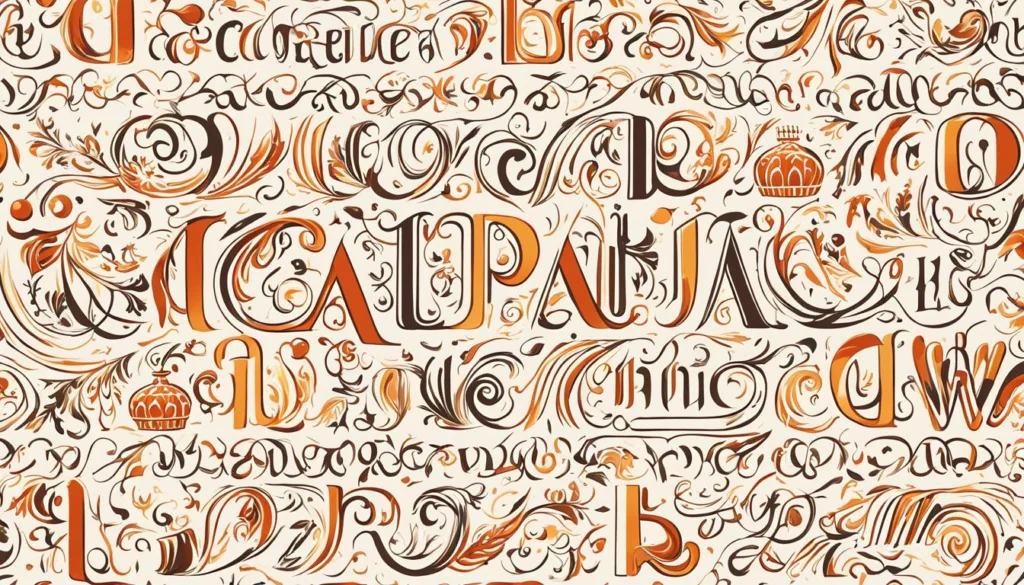
The harmonious coexistence of Cyrillic and Latin scripts is more than a charming characteristic; it’s a reflection of the Serbian spirit — resilient, adaptive, and inclusive. The alphabets serve as a mirror to a society’s soul, one that respects the weight of its past and looks towards the future with an open embrace.
Languages Spoken Serbia: A Mosaic of Minority Tongues
The harmonic symphony of language diversity in Serbia is brought into full display by the enduring presence and vitality of its minority languages. These languages, though lesser in the number of speakers compared to the official Serbian, are an integral part of the nation’s cultural fabric. From the educational corridors to the nuances of public administration, they articulate the voices of various ethnic communities throughout this Balkan country.
Hungarian, Slovak, and Other Regional Languages
In the north, the Autonomous Province of Vojvodina shines as a testament to language diversity in Serbia, where Hungarian and Slovak are not just symbols of heritage, but engines of everyday life and governance. These minority tongues, alongside others like Romanian and Rusyn, thrive in municipalities where they echo through classrooms and council halls alike. It’s not rare to hear a blend of regional languages as one traverses the mosaic landscapes of Vojvodina, a phenomenon indicative of Serbia’s commitment to linguistic inclusivity.
The Status of Minority Languages in Serbian Legislation
Underpinning this celebration of linguistic plurality is Serbian legislation, harmonized with international standards like the European Charter for Regional or Minority Languages. Recognizing over 15 minority languages in Serbia, this legal framework ensures their continued usage and development. Whether contributing to the intricate policymaking or echoing through the entertainment industry, languages like Albanian, Bosnian, and Bulgarian are secured a spot in the annals of Serbian law, safeguarding them for generations to come.
Language Use in Educational Systems and Public Life
In education and public life, the minority languages of Serbia take on a functional role that reaches beyond mere symbolism. School curricula catering to minority communities are delivered in these languages, endorsing a multifaceted and culturally aware education system. The interwoven narrative of Serbia’s public life further encapsulates the rich tapestry of its minority languages, with media outlets and government services extending their accessibility to include these linguistic heritages, thus fostering an environment where all citizens can freely express and navigate through their daily lives.
Historical Influences on the Serbian Language
The linguistic heritage of Serbia is a fascinating journey through time, marked by the evolution and assimilation of diverse linguistic influences. To understand the complexity of the Serbian language, it’s essential to explore its historical trajectory from Old Serbian to the contemporary idioms spoken today.
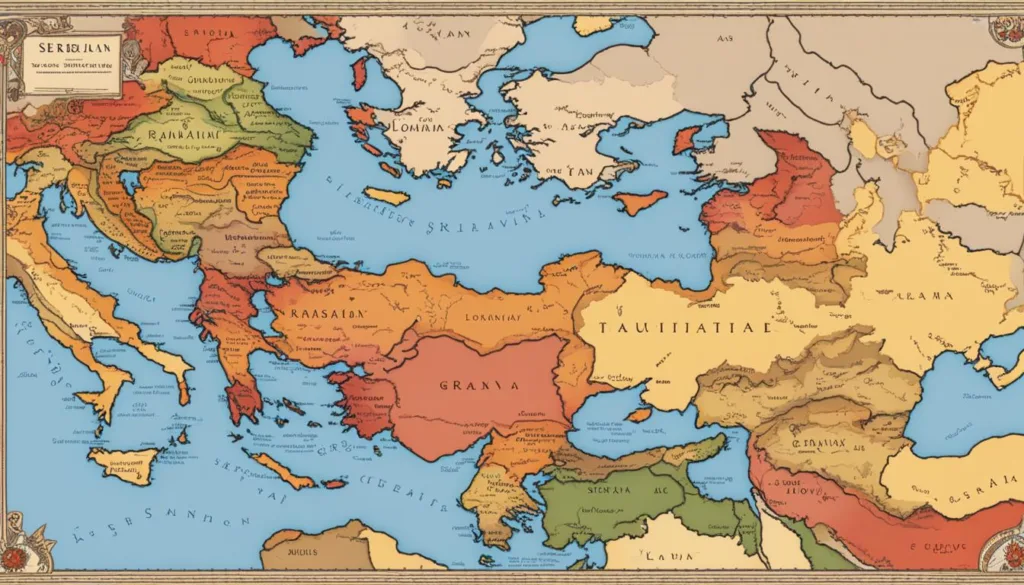
From Old Serbian to Modern Vernacular: An Evolution
The transition from the Old Serbian language, with its ancient roots, to the modern dialects spoken by Serbians is reflective of significant cultural progressions. These changes in language reflect a broader context of historical events, migrations, and social transformations that have shaped the current linguistic landscape of the region.
Cultural and Historical Interactions Shaping Serbian
Through centuries, Serbia’s strategic geographical position served as a crossroads for various empires and cultures, each leaving a linguistic imprint on Serbian. The rich tapestry of language evolution in Serbia exemplifies the dynamic nature of linguistic development influenced by cultural and historical interactions.
| Epoch | Linguistic Influence | Elements Borrowed | Impact on Modern Serbian |
|---|---|---|---|
| Medieval Period | Old Church Slavonic | Vocabulary, Syntax | Foundation for literary language |
| Ottoman Rule | Turkish | Loanwords | Influence on daily communication |
| 19th Century | French, German | Cultural terms, Technology | Modernization of the language |
| 20th – 21st Century | English | Technological vocabulary, Pop culture | Globalization and contemporary usage |
In conclusion, the linguistic heritage of Serbia offers an intriguing glimpse into how language can adapt and evolve, mirroring the sociopolitical and cultural shifts within a nation. As we explore the vast influences that shaped the Serbian language, we gain a deeper appreciation for the rich historical tapestry woven into the very words spoken by its people today.
Serbian, a Slavic Language Family Member
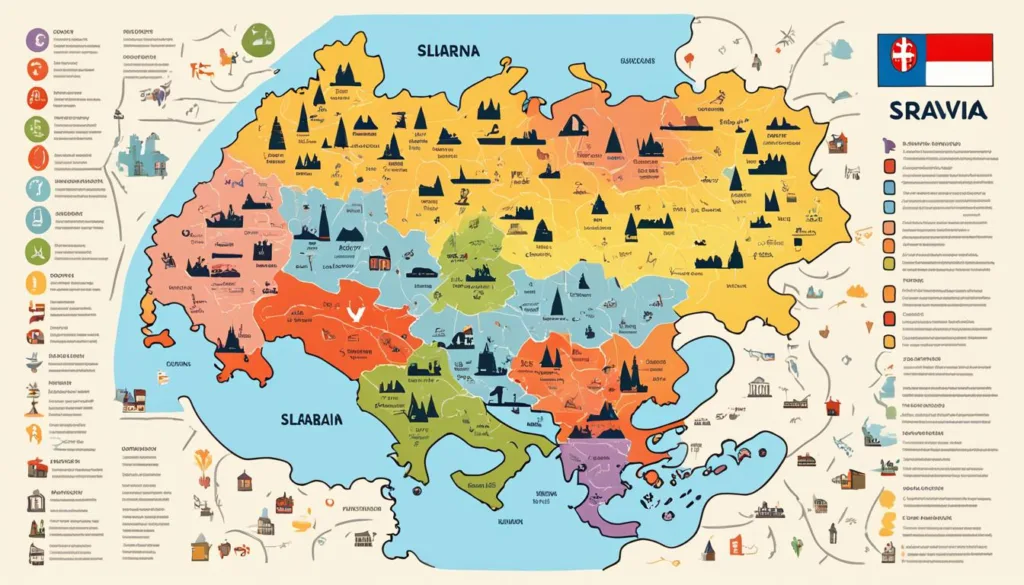
Delving into the linguistic roots of Serbian reveals a rich history that aligns it closely with other members of the Slavic language family. This relationship not only highlights shared origins but also reflects the nuanced variations that have emerged over time within this diverse group of languages.
Serbian, recognized as a significant South Slavic language, maintains numerous features that resonate with sibling tongues in the Slavic family. These linguistic siblings include languages such as Bulgarian, Croatian, Czech, and Slovak, each possessing a unique identity yet remaining unmistakably connected through the echo of their Proto-Slavic ancestry.
| Language | Script | Dialect Influences | Geographic Distribution |
|---|---|---|---|
| Serbian | Cyrillic and Latin | Shtokavian, Torlakian | Serbia, Balkans |
| Bulgarian | Cyrillic | Balkan Sprachbund | Bulgaria, some parts of Ukraine |
| Croatian | Latin | Chakavian, Kajkavian, Shtokavian | Croatia |
| Czech | Latin | Bohemian, Moravian, Silesian | Czech Republic |
The evolution of Serbian through linguistic prisms such as the Shtokavian and Torlakian dialects grants it a distinct flavor within the Slavic tapestry. Meanwhile, the balancing act between Cyrillic and Latin scripts in Serbian writing illuminates the language’s adaptive progression over time and its inclusive approach to communication.
Exploring Serbian as a Slavic language unveils connections that span across borders and centuries, knitting it firmly into the intricate pattern of the Slavic linguistic tradition. As such, Serbian serves as a cornerstone within the vibrant community of Slavic languages, cementing its place within the broader cultural and historical context of the Slavic-speaking world.
Understanding Serbia’s Bilingual Signage System
Navigating the streets of Serbia can feel like a journey through a living museum of linguistic diversity. The country’s approach to bilingual signage system and script diversity forms the bedrock of this inclusive practice, making it a striking feature of Serbia’s urban and rural landscapes alike.
Signage in Multiple Languages: Inclusivity and Practicality
In Serbia, the concept of inclusivity is not an abstract idea but a tangible element of everyday life. Signage in multiple languages occurs in areas where ethnic minority communities are prevalent. This approach exemplifies the dual virtues of inclusivity and practicality, facilitating navigation for both residents and visitors, irrespective of their linguistic background.
Script Diversity in Practice: From Street Signs to Official Documents
From the bustling boulevards of Belgrade to the quiet corners of Vojvodina, script diversity shines through. Reflecting a commitment to its diverse citizenry, Serbia ensures that everything from street signs to official documents is presented in relevant languages and scripts. This practice upholds the spirit of the nation’s legislative framework and underscores a wider recognition of its multifaceted identity.
| Location | Languages and Scripts | Documents and Signage Examples |
|---|---|---|
| Belgrade | Serbian (Cyrillic and Latin scripts) | Government buildings, Road signage |
| Subotica | Serbian (Cyrillic and Latin), Hungarian, Croatian | Public facilities, Multilingual street signs |
| Vojvodina | Serbian, Hungarian, Slovak, and more | Educational institutions, Provincial government documentation |
Language Usage in Serbia’s Media and Technology Landscape
The media in Serbia reflects a diverse cultural tapestry, with content creators and broadcasters producing material in Serbian as well as various minority languages. It’s this inclusivity that makes the Serbian media a key player in upholding the linguistic rights of its audience, providing a spectrum of voices and viewpoints. On the flip side, the technology landscape Serbia offers is evolving rapidly, with a sharp focus on innovation and adaptability. Dual-script support in digital platforms is paving the way for a more integrated and cohesive communication environment, regardless of language preference.
The landscape of Serbia’s technology and media sectors is perhaps best illustrated through the lens of an emerging digital ecosystem. This digital transformation is not only about adopting new tools but also about ensuring that these tools are accessible to everyone. Online services, from news portals to government platforms, are acknowledging the need to be multilingual, enabling users to switch seamlessly between Cyrillic and Latin scripts. This uplifts the technological engagement of communities, democratizing access to information and services.
| Media/Technology Platform | Language Support | Script Support | Notable Features |
|---|---|---|---|
| Television Broadcasts | Serbian, Hungarian, Slovak, and more | Cyrillic and Latin | Subtitles for diverse linguistic groups |
| Print Media | Multi-language publications | Cyrillic and Latin | Community-specific publications |
| Online News Portals | Serbian, minority languages | Cyrillic and Latin | User-selectable language settings |
| E-Government Services | Serbian, English | Cyrillic and Latin | Inclusive access to public services |
| Software and Apps | Multi-language interfaces | Cyrillic and Latin | Customizable user experiences |
In light of Serbia’s dynamic integration of technology and media, we witness a thriving engagement that champions both innovation and cultural preservation. The commitment to multilingualism in Serbia’s technological endeavors signals a future that embraces diversity, ensuring that all societal segments can participate in the digital age.
English and Other Foreign Languages in Serbia
As Serbia positions itself within the global framework, the importance of English and foreign language competence becomes increasingly evident. This linguistic trend reflects an educational and cultural shift towards international integration and communication.
The Rise of English as an International Lingua Franca
In the heart of Southeast Europe, Serbia’s engagement with international business, academic pursuits, and digital platforms has spurred the rise of **English in Serbia**. The language’s ubiquity in global affairs has rendered it essential for Serbians aiming to broaden their horizons and connect with the wider world.
Foreign Language Education in Serbian Schools
A reflection of this global orientation is apparent in the emphasis placed on **foreign language education Serbia**. Schools across the nation prioritize language programs encompassing English, French, German, and Russian. This educational strategy arms the youth with the ability to partake in diverse cultural dialogues and grants them a competitive edge in an interconnected global society.
With a comprehensive, adaptable language curriculum, Serbian educational authorities showcase their commitment to equipping students for the demands and opportunities of the international stage.
The dedication to linguistic advancement prepares Serbian students not only for academia but also for the ever-evolving job market, which increasingly values multilingual proficiency. By fostering such skills, Serbia fortifies its future, ensuring its citizens are not just participants but active contributors to the global community.
Conclusion
The tapestry of languages in Serbia demographics manifests a vivid reflection of the nation’s rich historical fabric interwoven with the threads of modernity. The presence of the Serbian language, underpinned by its diverse dialectical nuances, serves as the foundation upon which the country’s language mosaic is built. This is further adorned by the wide recognition and use of minority languages, each receiving its due place within the societal and legal domains of Serbia.
Strikingly representative of Serbia’s commitment to linguistic diversity is the harmonious integration of the Cyrillic and Latin alphabets in daily usage, which encapsulates the country’s dual heritage and its adaptive progression. The application of various scripts across public signages deepens the cultural dialogue amongst Serbia’s different linguistic communities, while the educational inclusion of foreign languages prepares young Serbians for the global stage of interconnectedness.
As a nation, Serbia demonstrates its allegiance to its ancestral roots while progressively fostering an environment receptive to global linguistic trends. This confluence of the old with the new, and of the domestic with the foreign, sketches a compelling and dynamic linguistic landscape, making Serbia a unique study in cultural and linguistic resilience and adaptability.
FAQ
What Languages are Spoken in Serbia?
In Serbia, the predominant language is Serbian. There is also a significant language diversity that includes Hungarian, Bosnian, Croatian, Albanian, Slovak, Romanian, and various other minority languages, particularly in regions such as Vojvodina and Kosovo & Metohija. The linguistic landscape of Serbia is consequently rich and varied.
Is Serbian the Only Official Language in Serbia?
Serbian is the official language with nationwide recognition. However, in the autonomous provinces of Vojvodina and Kosovo & Metohija, other languages also have official status. Vojvodina recognizes Hungarian, Slovak, Romanian, Croatian, and Rusyn, while Kosovo & Metohija has both Serbian and Albanian as official languages.
What are the Main Dialects of the Serbian Language?
The Serbian language has several dialects that add to its linguistic richness. These include Šumadija-Vojvodina, Kosovo-Resava, Eastern Herzegovina, and others. Each dialect contributes its unique characteristics to the overall tapestry of Serbian linguistic variance.
Do Serbians Use the Cyrillic or the Latin Alphabet?
Serbians employ both the Cyrillic and the Latin alphabets in daily life. The Serbian Cyrillic keyboard and the Serbian Latin alphabet are both widely used, reflecting the country’s balance between tradition and modern influences.
What Are Some Minority Languages Recognized in Serbia?
Serbia recognizes an array of minority languages, including Hungarian, Slovak, Bosnian, Bulgarian, Croatian, Macedonian, Romanian, and Ukrainian, among others. These languages are particularly prevalent in areas with significant ethnic minority populations, like Vojvodina.
How Are Minority Languages Protected in Serbian Legislation?
Minority languages in Serbia are protected under national laws and international agreements such as the European Charter for Regional or Minority Languages. They are used in municipalities where these language speakers form a significant part of the population, with applications in education and public administration.
What Historical Influences Have Shaped the Serbian Language?
The Serbian language has been influenced by a range of factors throughout its history. These include interactions with Byzantine, Ottoman, Austro-Hungarian empires, and more recent contacts with French and German languages. These interactions have shaped the evolution from Old Serbian to the modern vernacular.
Is Serbian Part of the Slavic Language Family?
Yes, Serbian is a member of the South Slavic group of the Indo-European language family. It shares linguistic characteristics with other Slavic languages, including Bulgarian, Croatian, Czech, Polish, Russian, Slovene, and Slovak.
How Does Serbia’s Bilingual Signage System Work?
Serbia’s bilingual signage system is designed to reflect the country’s linguistic diversity. In areas with substantial minority language-speaking populations, signs display multiple languages, including Serbian and relevant minority languages. This showcases the country’s commitment to linguistic inclusivity and practical communication.
What Role Does English Play in Serbia?
English is the primary foreign language taught and spoken in Serbia and serves as an important tool for international communication. English, along with other foreign languages like French, German, and Russian, is widely taught in schools, reflecting the country’s emphasis on multilingual proficiency and global engagement.

